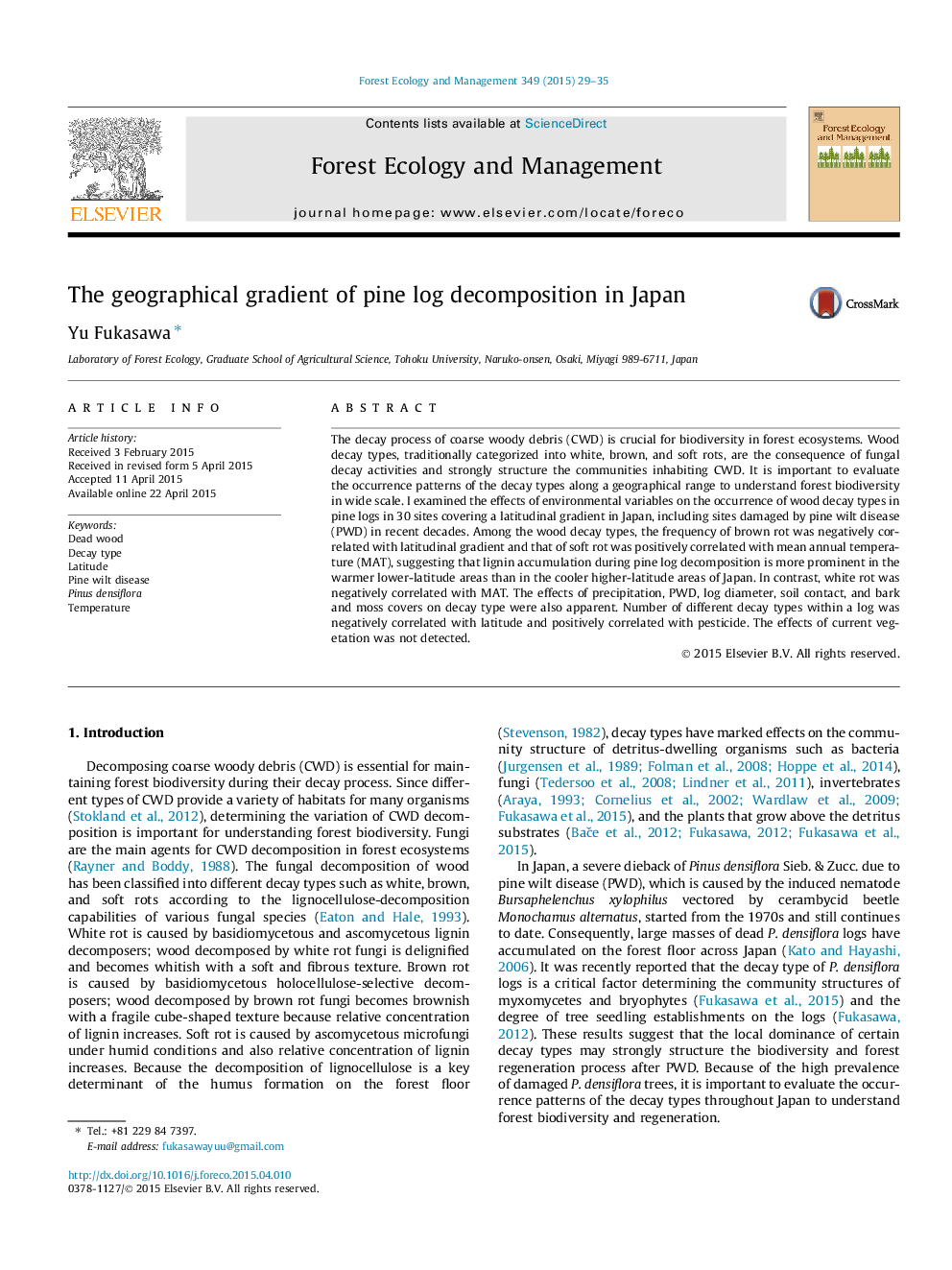| Article ID | Journal | Published Year | Pages | File Type |
|---|---|---|---|---|
| 86268 | Forest Ecology and Management | 2015 | 7 Pages |
•I compared the occurrence of the decay types in pine logs at 30 sites in Japan.•Brown rotted logs were more frequent in low latitude sites.•White rot was more prominent in cooler areas.•Pine wilt disease positively affected both white and brown rots.•Number of different decay types in a log was negatively correlated with latitude.
The decay process of coarse woody debris (CWD) is crucial for biodiversity in forest ecosystems. Wood decay types, traditionally categorized into white, brown, and soft rots, are the consequence of fungal decay activities and strongly structure the communities inhabiting CWD. It is important to evaluate the occurrence patterns of the decay types along a geographical range to understand forest biodiversity in wide scale. I examined the effects of environmental variables on the occurrence of wood decay types in pine logs in 30 sites covering a latitudinal gradient in Japan, including sites damaged by pine wilt disease (PWD) in recent decades. Among the wood decay types, the frequency of brown rot was negatively correlated with latitudinal gradient and that of soft rot was positively correlated with mean annual temperature (MAT), suggesting that lignin accumulation during pine log decomposition is more prominent in the warmer lower-latitude areas than in the cooler higher-latitude areas of Japan. In contrast, white rot was negatively correlated with MAT. The effects of precipitation, PWD, log diameter, soil contact, and bark and moss covers on decay type were also apparent. Number of different decay types within a log was negatively correlated with latitude and positively correlated with pesticide. The effects of current vegetation was not detected.
